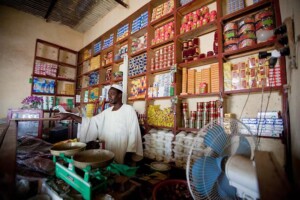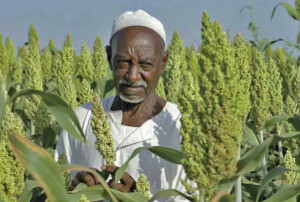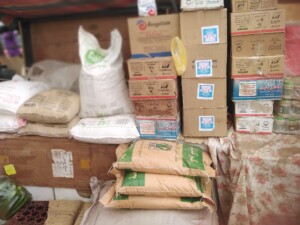Sudan’s Water Ministry expands flood warnings as Nile levels surge
Sudanese authorities have reiterated their urgent appeal to the public and all sectors in the Nile valley “to take the necessary precautionary measures and exercise caution”, as flood levels continue to rise. In the capital Khartoum, which lies at the confluence of the Blue Nile and the White Nile, the river recorded a level of 16.86 metres on Saturday, which exceeds the flood level by 36 centimetres, up from 24 centimetres on Thursday. The Sudanese Ministry of Irrigation and Water Resources announced via the official Sudan News Agency (SUNA) that the water volume of the Blue Nile has been registered at 744 million cubic metres, while further downstream, the Atbara river which flows into the main stream of the Nile at the Sudan-Ethiopian border recorded 230 million cubic metres..
 The rainy season in Sudan (File photo: Social media)
The rainy season in Sudan (File photo: Social media)
Sudanese authorities have reiterated their urgent appeal to the public and all sectors in the Nile valley “to take the necessary precautionary measures and exercise caution”, as flood levels continue to rise.
In the capital Khartoum, which lies at the confluence of the Blue Nile and the White Nile, the river recorded a level of 16.86 metres on Saturday, which exceeds the flood level by 36 centimetres, up from 24 centimetres on Thursday. The Sudanese Ministry of Irrigation and Water Resources announced via the official Sudan News Agency (SUNA) that the water volume of the Blue Nile has been registered at 744 million cubic metres (m3), while further downstream, the Atbara river which flows into the main stream of the Nile at the Sudan-Ethiopian border recorded 230 million m3.
The Flood Committee of the ministry predicted yesterday that the Roseires-Sennar sector of the Nile will witness stability, the Sennar-Khartoum sector will witness a rise of three centimetres and the Khartoum-Shendi sector will see a rise of eight centimetres. While the Shendi-Atbara sector is expected to be stable, the stretch from Atbara to Merowe, further swollen by the Atbara river, will see a rise of 11 centimetres, and the Merowe–Dongola sector can expect a rise of four centimetres.
The water draining at the Roseires Dam reached 634 million m3 yesterday, compared to 635 million m3 on Friday. During the same period, Sennar saw flow increase by 10 million m3 from 658 to 668 million m3. The water volume at Merowe Dam registered 740 million m3, compared to 744 million m3, with a decrease of four million m3, a decrease was also recorded in Jebel Aulia in southern Khartoum, Atbara, and Upper Seteet, as Jebel Aulia recorded 59 million m3 on Saturday, compared to 57 million m3 on Friday, with a decrease of two million m3, Upper Atbara and Seteet registered 198 million m3 yesterday, compared to 221 million m3 24 hours earlier.
The statement warned the public in all sectors of the river to take the necessary precautions and exercise caution.
An update at the end of last week by the UN Office for the Coordination of Humanitarian Affairs (OCHA) in Sudan points out that since the beginning of the rainy season, an estimated 12,000 people have been affected by the heavy rains and flooding in eight out of 18 states. Over 800 homes have reportedly been destroyed and over 4,400 homes damaged. States affected include El Gedaref, White Nile, South Darfur, West Darfur, North Kordofan, River Nile, South Kordofan and El Gezira.
As previously reported by Radio Dabanga, high water levels and floods have wreaked havoc in El Gezira, El Gedaref, and Sennar states, as heavy rains continue to swell rivers.
El Gezira has been particularly hard hit. The state government of El Gezira announced the deaths of two people, more than 200 families have been affected, and three government facilities were destroyed as a result of recent heavy rains followed by flash floods in the state.











 and then
and then